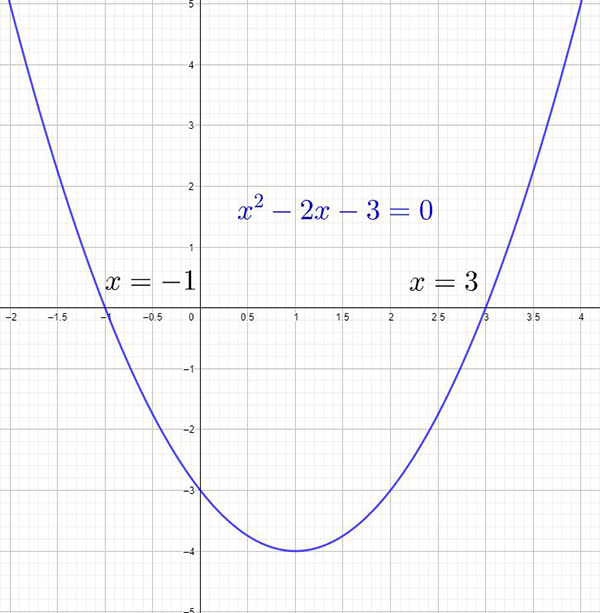Hi, I’m Martin Lindsay from the Study and Learning Centre at RMIT University. This is a short movie on solving quadratic equations.
The general form of a quadratic equation is A X squared plus B X plus C equals zero where A is not equal to one. For instance, five X squared minus three X plus nine equals zero. In this case A equals five, B equals minus three and C equals nine and if you have the equation X squared equals five X minus four you then have to rearrange it into the form A X squared plus B X plus C equals zero, in other words this becomes X squared minus five X plus four equals zero where A equals one, B equals minus five and C equals four.
Let’s start with Y squared equals five Y. As you can see this is not of the form A X squared plus B X plus C equals zero, so rearrange it to make it look like that, Y squared minus five Y equals zero. Notice that this will factorise into Y brackets Y minus five. Then we have the form M times N equals zero, Y times Y minus five equals zero, so we can use the null factor law where Y equals zero or Y minus five equals zero, from which Y equals zero or Y equals five. Notice when you get your answers it’s a good idea to check that when substituting Y equals zero and Y equals five back into the original Y squared equals five Y that you get the left hand side equal to the right hand side. Do this for yourself.
Let’s look at this example, X squared minus five X plus four equals zero. Note how it’s different to example one, there’s a trinomial here, X squared term and X term and a number term, a constant. That will factorise into X minus four X minus one, again we have our null factor law X minus four times X minus one, so using that law we get X minus four equals zero or X minus one equals zero from which X equals four or X equals one. It’s always a good idea to check to see that the answers are correct by substituting back into the original equation. You can do this for yourself.
Let’s look at another trinomial, P square plus 10 P plus 25 equals zero. This will factorise into P plus five P plus five. Notice it’s a perfect square and thus, using the null factor law, we have just one P plus five equals zero from which P equals minus five. Again, do the check to make sure the left hand side of the original equation equals the right hand side, which is zero.
Here’s another example, four M squared minus 49 equals zero. Notice that this is the difference of a perfect square, in other words it becomes two M plus seven two M minus seven equals zero. Again using the null factor law two M plus seven equals zero two M minus seven equals zero from which M equals minus seven over two or M equals plus seven over two.
And finally here’s a more complicated quadratic equation to solve. Here we’re given X equals minus six over one minus two X so we have to do some rearranging first to turn it into A X square plus B X plus C equals zero, and that’s what I’ve done in this second line, so we have two X squared minus X minus six equals zero which needs to be factorised and it does, into two X plus three X minus two equals zero, using the null factor law we arrive at X equals minus three over two or X equals two, so those are our solutions.
Now do some problems for yourselves. The answers to these six questions are on the next slide. Thanks for watching this short movie.



